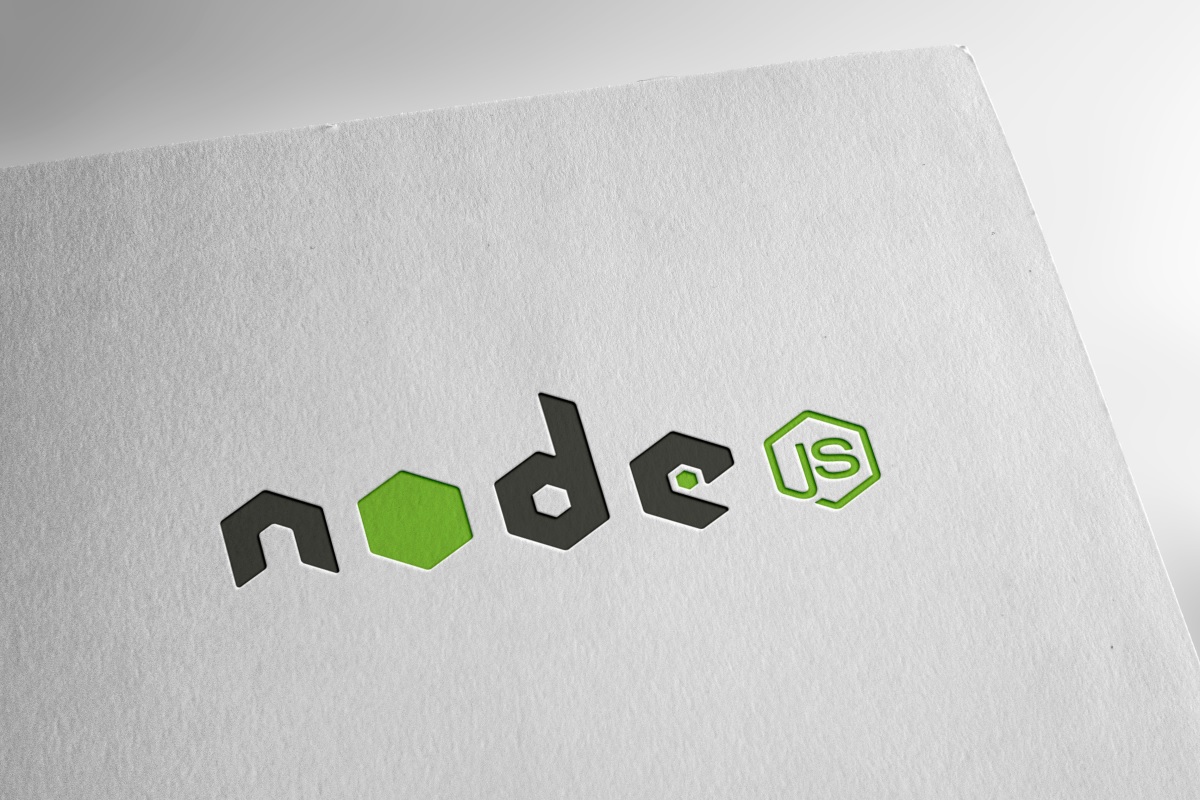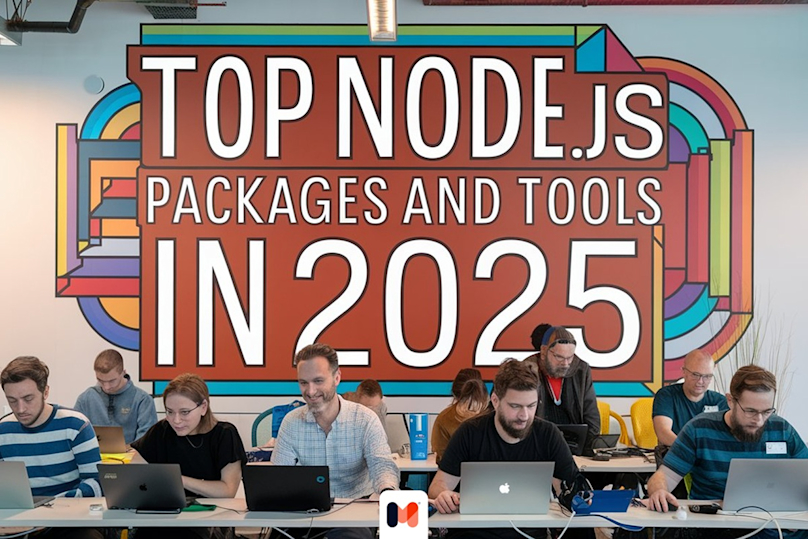Introduction
NodeJS has become a leading technology for building fast and scalable web applications with its asynchronous, event-driven architecture. In 2024, Node JS remains a top choice for crafting modern web and mobile apps due to its non-blocking I/O model, which efficiently handles countless concurrent connections. From real-time messaging apps to location-based services, NodeJS empowers developers to create responsive and fluid user experiences. This article will explore diverse application types that highlight the capabilities and benefits unlocked by Node JS, drawing examples from renowned companies successfully leveraging this technology across various industries and use cases. The following tutorial demonstrates NodeJS as an ideal framework for building today's data-intensive, real-time, and collaboration-driven applications to meet rising user expectations. Let's explore Node JS app types.
What is Node JS?

NodeJS is a popular JavaScript runtime that allows developers to build scalable social networking services using JavaScript on the server side. Thanks to its event-driven, non-blocking I/O model, Node JS makes it possible to develop fast and efficient web node js app examples.
NodeJS provides a runtime environment allowing developers to run JavaScript code of a web browser like Mozilla. It utilizes Google's and Yahoo's high-performance V8 JavaScript engine to run JavaScript code efficiently. Node JS uses an event-driven, non-blocking I/O model that makes it lightweight and capable of handling many concurrent connections efficiently.
While JavaScript has traditionally been confined to client-side scripting in web browsers such as Chrome, the emergence of NodeJS has enabled the use of JavaScript for server-side web development. This opens up many possibilities, as JavaScript can now be leveraged for full-stack development tasks. Additionally, using the same core language on both the front and the back end allows for seamless integration between the two application components. The flexibility of JavaScript powering both ends of a desktop app is a key advantage unlocked by Node JS.
Are you looking for trusted software agency for software developement or data science project?

Popular Types of Node JS Apps
In 2024, NodeJS will continue to be one of the top choices for building modern express web applications. Some of the types of apps that you can build with Node JS are given below.
1. Real-Time Collaboration Tools

Real-time collaboration tools enable seamless real-time communication and teamwork between users in real-time. These tools allow users to work jointly on shared projects, exchange messages, share files, and edit documents simultaneously.
Building real-time collaboration capabilities is best achieved using Node JS. Its event-driven architecture and WebSockets support facilitate instant and efficient communication between client and server. These features make NodeJS ideally suited for enabling real-time collaboration.
Google Docs, exemplifies a real-time collaboration application powered by NodeJS. It allows multiple users to edit a document with changes instantly synced across devices concurrently. This facilitates seamless real-time collaboration between users. Node JS enables the real-time capabilities of Google Docs.

Flaree exemplifies a real-time collaboration application built with NodeJS. The Mobile Reality production and SaaS is a Slack app that boosts employee productivity through real-time features. Flaree leverages NodeJS to let team members seamlessly co-edit docs, share files, and exchange messages in real time within Slack channels. The real-time capabilities that make Flaree effective are powered by NodeJS. By enabling instant communication and document syncing, NodeJS empowers companies like Flaree to create innovative collaboration tools that keep teams connected in real time.
2. Single-Page Node JS Apps
Single-page applications (SPAs) are web apps that operate within a single webpage, eliminating the need for full-page reloads and providing a more seamless user experience. Node JS has emerged as a preferred technology for building SPAs, especially when paired with popular front-end frameworks like React or Angular.
Node JS is well-suited for developing the server-side capabilities required by SPAs. Its event-driven, non-blocking I/O model can efficiently handle server-side rendering, real-time data updates, and API integrations. These capabilities make NodeJS a great fit for creating the smooth interactivity and responsiveness expected from modern SPAs.
Facebook exemplifies a complex single-page type of application built with app node js. As users navigate through Facebook's different types, like the newsfeed or messages, the page dynamically updates without full page reloads. This results in a fluid user experience. Behind the scenes, Node JS empowers real-time data synchronization and updates as users interact with the SPA. For building sophisticated apps like Facebook, Node JS is the ideal server-side technology.
3. Real-Time Application
Real-time applications need to process data and update information live for users instantly. NodeJS is well-suited for building real-time apps due to its event-driven architecture and non-blocking I/O model. This enables Node JS to handle many concurrent connections without performance issues.
Slack exemplifies a real-time application powered by Node JS. It allows teams to collaborate through real-time channels, messages, and file sharing in real-time. With its ability to handle thousands of concurrent connections, NodeJS enables Slack to provide instant messaging and seamless team communication. Node JS drives the real-time capabilities of Slack and LinkedIn.
In Mobile Reality, NodeJS is our first choice regarding backend web development. Our NodeJS developers and experts provide our Clients with end-to-end support regarding backend app projects NodeJS is a leading open source framework that allows our Clients to achieve outstanding business results.
Marcin Sadowski @ CEO of Mobile Reality
4. Online Payment Services as a Node JS Apps
Online payment processing is a major use case where NodeJS thrives thanks to its ability to handle secure transactions with low latency. The event-driven, non-blocking model of Node JS enables it to validate and process payments in real-time without delays rapidly. This makes NodeJS well-suited for handling the asynchronous tasks and rapid data updates required in online payment platforms.
As a mobile app development company, Mobile Reality relies on NodeJS to integrate online payment capabilities into the products we build for clients—the Node. Js-based backends enable us to seamlessly connect mobile apps to payment gateways like Stripe and Braintree for simple, secure in-app transactions. The real-time performance and scalability of NodeJS make it our preferred technology for integrating e-commerce functionality.
PayPal is a prominent example of an application, an online payment processor built with Node JS. It allows individuals and guides for business owners to send, receive, and manage online payments securely. Famous node js allows PayPal to seamlessly handle everything from transaction validation to sending payment notifications and automatic transfers. By leveraging NodeJS, PayPal scales to process billions of API requests daily while keeping latency low even during traffic spikes. The performance and responsiveness enabled by Node JS make it an ideal choice for online payment services aiming to deliver smooth, glitch-free payment experiences.
5. Location-Based Node JS Apps
Location-based first applications leverage geolocation data to provide users with personalized services and location information. NodeJS is well-suited for building these apps because it handles real-time data updates. It can efficiently process and synchronize location data between the server management services and clients.
Uber exemplifies a location-based application powered by NodeJS. As a ridesharing platform, Uber relies on real-time tracking of driver and passenger locations, matching them based on proximity, and providing accurate estimated arrival times. Node JS enables the real-time location capabilities that are mission-critical for Uber's services.
Specifically, Node JS allows Uber to:
Track driver and passenger locations in real-time
Rapidly calculate optimal matches based on locations
Send real-time updates to users about ride availability, driver proximity, estimated arrival times, etc.
NodeJS provides the ideal server-side technology stack to make the experience smooth and responsive.
6. Streaming Applications
Among different types of applications, streaming applications are another one that can be considered to develop with NodeJS technology. It needs to process and deliver media content management styles like video, music, and live events to users in real time. Node JS is well-suited for building streaming apps because it can efficiently handle large file uploads and downloads. This ensures a smooth, uninterrupted application streaming experience.
Netflix exemplifies a streaming web application powered by Node JS. As the leading video streaming service, Netflix relies on NodeJS to manage the massive data traffic involved in streaming content to millions concurrently. NodeJS enables Netflix to deliver reliable content, easy playback, and uninterrupted streaming across devices.
By leveraging NodeJS, media streaming platforms can deliver reliable, glitch-free experiences - for video like Netflix or audio like Audio Music Marketplace. Its speed and efficiency make NodeJS an ideal backend technology.
Specifically, NodeJS empowers Netflix to
Handle huge numbers of concurrent users streaming videos
Quickly upload and encode video files to prepare them for streaming
Rapidly transfer video data to client devices for instant playback
Scale streaming infrastructure to meet demand spikes and growth
By leveraging NodeJS, media streaming platforms can deliver reliable, glitch-free experiences - for video like Netflix or audio like Audio Music Marketplace. Its speed and efficiency make NodeJS an ideal backend technology.
Do you need support with your NodeJS backend development efforts?

7. Internet of Things (IoT)

The Internet of Things (IoT) refers to the vast network of physical devices with sensors, software, and connectivity to exchange data and interact with each other over the Internet. This massive interconnectivity challenges managing the data flows and requests between millions of devices. NodeJS has emerged as a preferred technology for developing IoT applications due to its lightweight event-driven architecture and ability to handle high concurrency. The asynchronous, non-blocking I/O model of NodeJS makes it well-suited for coordinating the real-time data exchange required in IoT devices.
Philips Hue smart lighting demonstrates an IoT application powered by Node JS. It allows users to control lights remotely, adjust colors, and set lighting schedules from their mobile devices. NodeJS facilitates real-time communication between the mobile app and the lighting system, enabling seamless control and synchronization.
By leveraging NodeJS, IoT developers can build applications that reliably and efficiently deal with the interconnectedness of millions of devices. The scalability and speed of Node JS unlock new possibilities in the rapidly growing field of the Internet of Things.
8. Microservices Architecture
Microservices architecture is an approach where large applications are divided into smaller, independent services. Each microservice runs and communicates through APIs and other lightweight mechanisms.NodeJS is ideal for building microservice architecture due to its module, scalable nature. Its asynchronous event-driven model facilitates the creation of highly decoupled services.
Netflix exemplifies a popular company leveraging NodeJS for microservices. Their platform consists of hundreds of independent Node JS microservices handling functionality like user authentication, recommendations, content delivery and more.
Some benefits Netflix gains from Node JS microservices include the following:
Ability to independently develop, deploy and scale services
Resilience - if one service fails, others are not impacted
Flexibility to use the best tools for each job
Efficient distribution of workload across systems
The modular architecture enabled by NodeJS microservices allows complex systems like Netflix application to remain agile, resilient and easy to maintain. As microservices gain popularity, NodeJS has emerged as a leading choice for implementing this architectural style. Its scalability unlocks the benefits of microservices for large-scale applications.
9. Fintech Node JS Apps
The fintech sector utilizes technology to deliver financial services like payments, lending, and investment management. Node JS has gained popularity for building fintech apps due to its speed, scalability, and event-driven structure. This enables Node JS to handle high traffic volumes and process real-time financial data efficiently.
Fintech applications demand high performance, security, and reliability. Node JS empowers fintech companies to meet these requirements while remaining agile and scalable. Its growing popularity in this sector is a testament to node package manager capabilities for building complex financial applications.
The JavaScript-based NodeJS platform has emerged as a top choice for building innovative fintech applications thanks to its event-driven, non-blocking I/O model, which is ideal for real-time financial transactions. Mobile Reality finance and banking solutions leverage its deep experience with Node JS to provide clients with cutting-edge fintech and banks. Mobile Reality develops robust fintech applications across the financial spectrum, from digital payments to blockchain. With expertise in open banking and experience driving digital transformation for financial institutions, Mobile Reality is well-positioned to help companies stay ahead of the curve with customized fintech and banking solutions. Mobile Reality embraces the potential of emerging technologies to keep clients at the forefront of the rapidly evolving financial services industry.
Stripe exemplifies a fintech company leveraging Node JS. As an online payment processor, Stripe relies on Node JS to manage huge volumes of payment transactions and execute real-time data updates as payments are processed. Node JS's event-driven model allows Stripe to conduct asynchronous tasks like sending notifications and generating reports seamlessly.
Specifically, NodeJS enables Stripe to:
Rapidly validate and process customer payments
Instantly trigger post-payment events like emails and log updates
Quickly incorporate new data like disputes and refunds
Scale to peak traffic loads during busy shopping periods
10. E-commerce Applications
E-commerce applications have transformed online shopping and business by providing interactive platforms for users to browse, purchase, and manage products digitally. Node JS has emerged as an ideal technology for building robust e-commerce express apps due to its ability to handle high traffic, scale, and enable real-time capabilities. You can develop flexible eCommerce product catalogs, shopping carts, and checkout procedures that improve your consumers' purchasing experiences.
Etsy exemplifies an e-commerce platform leveraging the strengths of NodeJS. As a marketplace for unique handmade and vintage items, Etsy relies on Node JS to manage the many concurrent user connections searching, browsing, and purchasing products. Node JS allows Etsy to seamlessly handle real-time inventory updates, process secure payments, and deliver personalized recommendations to enhance the user experience.
Specifically, Node JS empowers Etsy to:
Smoothly manage traffic spikes during peak sales periods
Provide real-time order and inventory status updates
Rapidly process purchases and payment transactions
Quickly update product catalogs and recommendations
The performance, scalability, and real-time capabilities unlocked by NodeJS make it an ideal backend for modern e-commerce experiences. By powering platforms like Etsy, Node JS continues to push the boundaries of what is possible in online retail and commerce.
11. Content Management Systems
Effective digital content management and delivery requires robust Content Management Systems (CMS). Node JS has emerged as a top choice for building modern CMS platforms that demand real-time updates, seamless content delivery, and efficient management.
Developers can leverage Node JS' event-driven architecture and caching to create responsive and interactive CMS solutions. Its single-threaded, non-blocking model is ideal for handling concurrent CMS tasks like editing, publishing and rendering content.
Ghost, an example Node JS app, is an open-source CMS. As a platform optimized for simplicity, speed and flexibility, Ghost relies on Node JS to enable real-time content updates, efficiently handle multiple requests, and facilitate smooth writing and publishing flows.
Specifically, NodeJS empowers Ghost to:
Instantly publish new content updates to users
Seamlessly handle spikes in traffic and usage
Improve response times by caching frequently accessed content
Manage and deliver multimedia content efficiently
For modern CMS platforms requiring speed, scalability and real-time performance, NodeJS provides an ideal development framework. Its event-driven architecture unlocks robust new possibilities for companies like Ghost, pushing CMS technology forward.
12. Webserver
NodeJS web servers are especially useful for IO-intensive popular web browser apps where most time is spent waiting for network communication. Its event-driven structure prevents IO blocking. While NodeJS is not a full-fledged web server like Apache, its lightweight architecture makes it a great choice for building fast and scalable web servers. Popular Node JS web frameworks like Express.js and Koa simplify the creation of an http web server. You can easily handle routes, render web pages, and serve static files.
Express - The most popular web framework for Node JS. It provides features for web and mobile applications with minimal boilerplate visual studio code editor. Easy to use routing, middleware and template engine support.
Koa - A newer web framework designed to be smaller and more expressive than Express. Excellent for creating APIs and microservices.
13. Proptech Node JS Apps
NodeJS has proven to be an effective framework for developing innovative proptech applications. Mobile Reality utilized NodeJS to build TURO, an app that creates interactive 3D maps of construction sites over time based on building designs over time. For CBRE Zone, NodeJS enabled a cross-platform mobile and web solution to connect clients and end-customers through news, documents, reports, and analytics.
Another Node JS app example that Mobile Reality developed is DESA Locum platform for real estate auctions, bringing this modern method of property transactions to a broader audience. Across these examples, NodeJS provided the speed, scalability, and cross-platform capabilities needed for cutting-edge proptech apps involving large data sets, visualizations, and real-time updates. With its asynchronous event-driven architecture, NodeJS helps proptech solutions like these handle the demands of real-time insights and interactions in the dynamic property industry.
Conclusion
The versatility and performance of NodeJS make it an ideal choice for building a diverse range of modern web applications and mobile applications, from real-time collaborative tools to media streaming platforms. Companies like Uber, Netflix, and Slack show that Node JS empowers developers to create seamless user experiences by efficiently handling asynchronous events, non-blocking I/O, and countless concurrent connections. Whether creating data-intensive applications, microservices architectures, or scalable cloud platforms, NodeJS provides the speed, responsiveness, and reliability needed to meet today's demands. Its event-driven and Non-blocking approach unlocks new possibilities across industries. Node JS has solidified its position as a top technical stack for crafting robust and innovative applications.
Backend Development Insights
Dive into the web and backend development world with a focus on Node JS and Nest JS frameworks at Mobile Reality. We are thrilled to share our deep knowledge and practical insights into these robust technologies. Explore the unique challenges and cutting-edge solutions we encounter in backend development. Our expert team has curated a series of articles to provide you with a comprehensive understanding of backend development, NodeJS, and NestJS:
- Creating your own streaming app with WebRTC
- Advantages and disadvantages of NestJS
- Node JS vs PHP: A Complete Comparison for CTOs
- Pros & Cons of TypeScript In Web Development
- Top 5 Node.JS Backend Tools and Libraries in 2024
- GO vs Node JS : A Complete Comparison for CTOs
- Thumbnails on-the-fly with S3, LambdaEdge and Terraform
- Top 5 Node JS Packages and Tools by Mobile Reality in 2025
Gain a deeper understanding of these powerful backend technologies. If you want to collaborate on Node JS development projects, please contact our sales team for potential partnerships. For those looking to join our dynamic team, we encourage you to contact our recruitment department. We're always looking for talented individuals to enhance our backend development capabilities. Let's connect and explore how we can achieve great things together!




